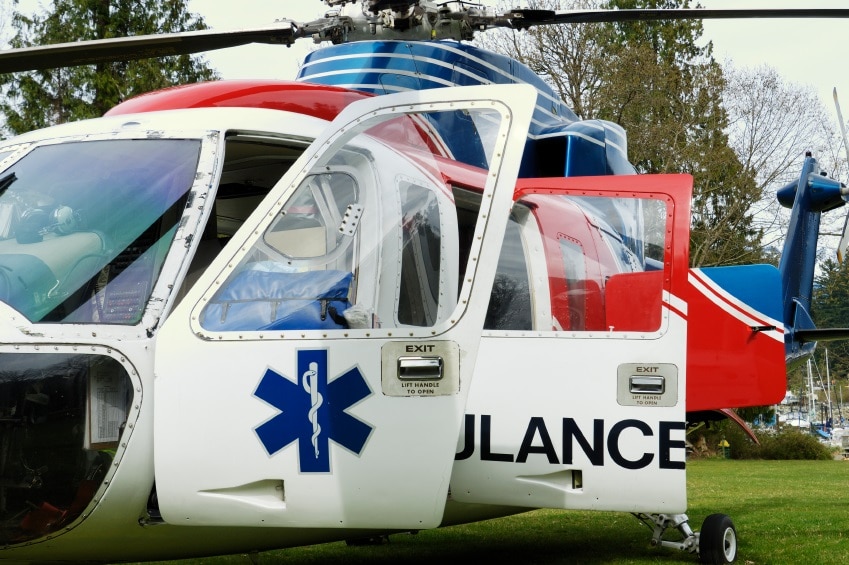Prince William to Become an Air Ambulance Pilot
Due to the urgent and often dangerous nature of the flight, helicopter air ambulance pilots are a unique brand of aircraft operators who take risks every day in order to help or rescue patients. In fact, the job has earned top ranking as one of the most dangerous professions. Because of this, air ambulance pilots are a small and close-knit community – one which will now include Prince William.
First Royal to Sign Civilian Contract
The Duke of Cambridge is deferring his royal engagements in order to pursue his love of flying by becoming an air ambulance pilot next spring. Prince William plans to join the nonprofit East Anglian Air Ambulance (EAAA) based at the Cambridge airport. The royal served as a fully operational pilot on the Sea King Helicopter flying more than 1,300 hours while working for the Royal Air Force Search and Rescue team from 2009 to 2013. He is the first royal family member in direct succession to sign an employment contract with the civilian employer Bond Air Services. Prince William plans to donate all of his salary to charity.
Air Emergency Services
Air ambulance is a medical air service that assists in transporting an injured person, or someone with emergency medical needs anywhere in the world. These aircraft offer a wide range of medical services on board with highly specialized medical personnel and equipment to ensure the victim is well tended to during transportation. Some of the specialized features of an air ambulance include seasoned pilots, flight nurse, flight paramedics, flight physicians, specialized on-board medical equipment and emergency medical units.
Prince William will be joining this elite team of medical and aviation experts to ensure that an injured person’s needs are met with quick, efficient and professional emergency medical services. This highly trained profession offers private ambulance services from the most urgent medical needs to non-emergency medical escort services.
FAA Provides New Operational Procedure Rules
In the U.S., according to the Federal Aviation Administration (FAA), there are only about 75 air ambulance companies in operation, with approximately 1,515 air ambulance helicopters. Unfortunately, 2008 was considered the deadliest year for air ambulance pilots, claiming 21 lives. Given these figures, it is important that the air ambulance helicopter pilots are well trained on safety procedures.
The FAA has developed, promoted and implemented initiatives to create stricter flight rules, procedures, improved communications and training as well as making sure every aircraft is well-equipped with on-board safety equipment. The FAA rules are part of a collaborative process between the helicopter emergency service industry and the government organization.
“Safety is always the top priority of the air medical community and we appreciate the FAA’s commitment to this effort,” says Rick Sherlock, chief executive officer of the Association of Air Medical Services (AAMS).
Air Medical Resource Management Training
In September of 2005, the FAA issued guidance to operators establishing minimum recommendations and guidelines for Air Medical Resource Management (AMRM) training.
Effective April 2015, the new flight rule procedure will require all medical helicopter operators to use enhanced procedures for flights in adverse weather conditions, when landing in remote locations and challenging terrain and other potential high-risk flight maneuvers. There is a contingency plan being implemented to ensure within three years helicopter air ambulances must use the latest on-board technology and equipment to navigate the difficult terrain. Within four years, all air ambulance aircraft must use updated flight data monitoring systems like Helicopter Terrain Awareness and Warning Systems (HTAWS).
Royal Training for Pilot Position
Starting in September, Prince William will train for about five months as a helicopter pilot. Once he has successfully completed the program next spring, the royal will join the charity group in Cambridge. Initially, the Duke of Cambridge will be employed as a co-pilot, but after some time and training he will qualify as a helicopter commander.
A palace spokesperson said, “The job will build on the Duke’s experience in the Royal Air Force search and rescue force. During which time he undertook more than 150 search and rescue options.”
As a pilot with the EAAA, the royal will join a team who performs life-saving work and is called to assist on an average of four incidents per day which may include life-threatening situations such as motor vehicle accidents and other medical emergencies that require immediate response.
For more information about the services of the air ambulance industry and the FAA-required safety procedures, visit the aviation attorneys of Slack Davis Sanger at www.slackdavis.com.

